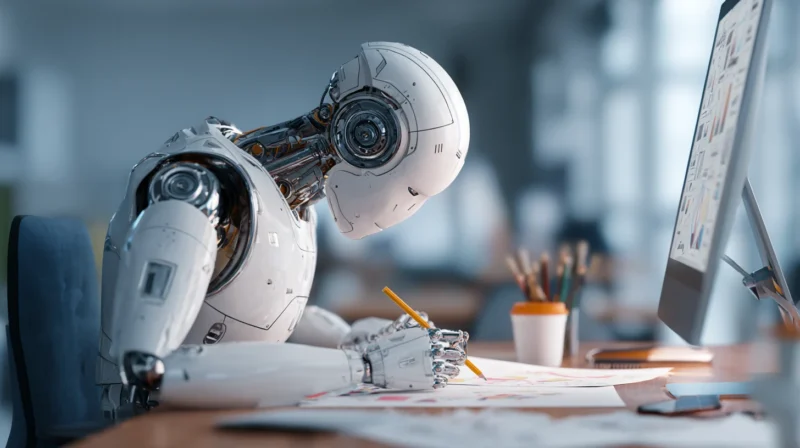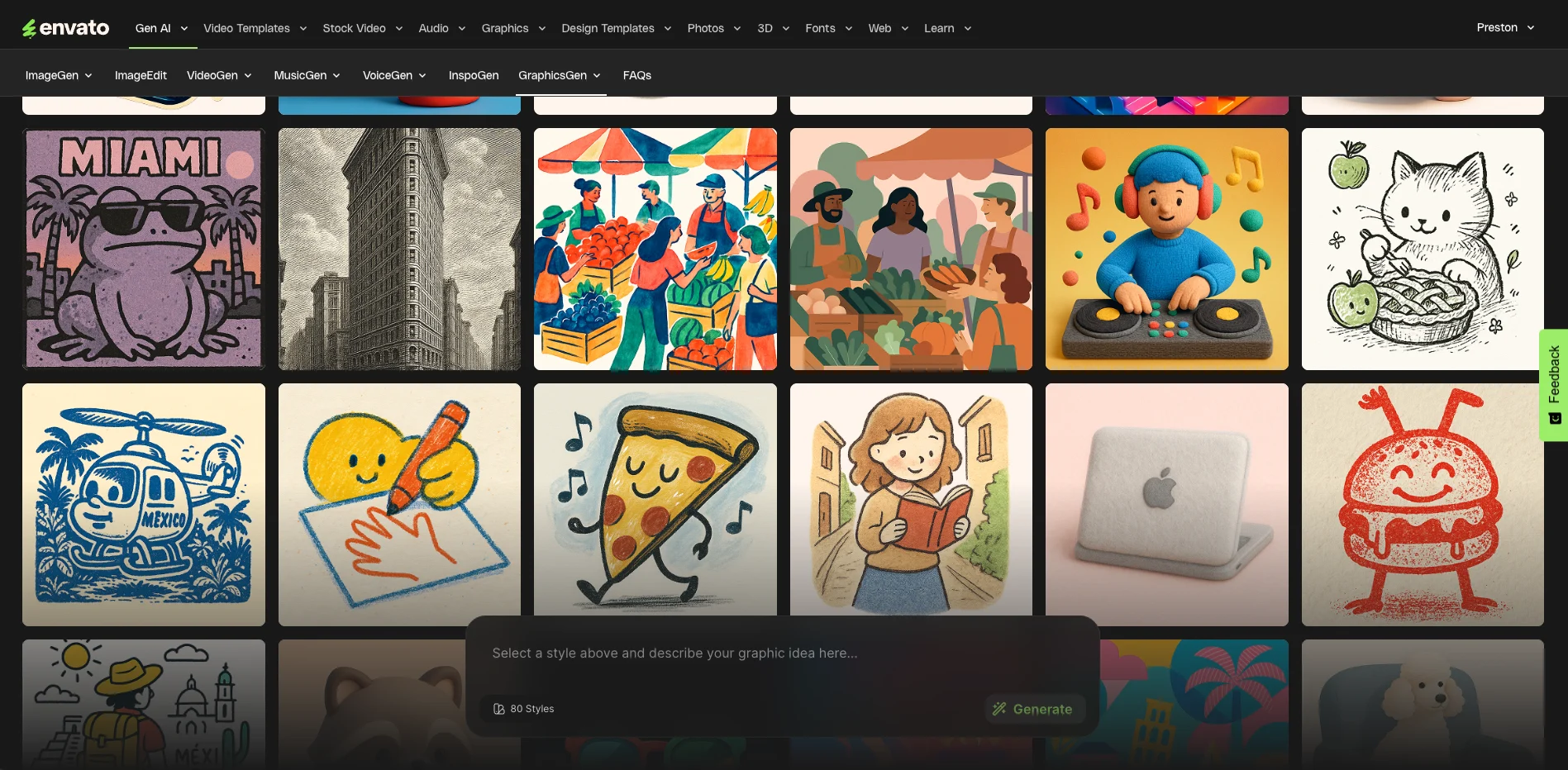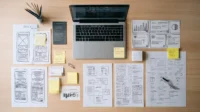In this article:
- The Reality Check We All Need
- The Skills That Matter More Than Ever
- The Tool Revolution: Envato's GraphicsGen and Beyond
- The Economic Reality
- Adaptation Strategies That Actually Work
- The Client Relationship Factor
- The Opportunity Hidden in Plain Sight
- Looking Forward: The New Design Landscape
Let’s cut through the noise and get real about something that’s keeping graphic designers awake at night: artificial intelligence isn’t coming for your job—it’s already here, and it’s transforming everything we thought we knew about design.
The uncomfortable truth is that AI has already begun reshaping the graphic design landscape in ways that would have seemed impossible just a few years ago. But before you start updating your resume for a career in retail, let’s dig into what this actually means for your future as a creative professional.
The Reality Check We All Need
Gone are the days when we could dismiss AI as a novelty that creates amusing but unusable images. Today’s AI tools are sophisticated enough to produce professional-quality logos, marketing materials, and even complex design systems. Companies are already using AI to generate content at scale, and the results are getting better by the day.
I’ve watched clients who used to hire designers for every small project now turn to AI tools for quick solutions. Social media graphics, basic logos, and simple layouts—work that once provided steady income for many designers—can now be generated in seconds rather than hours.
But here’s where it gets interesting: this shift isn’t necessarily the apocalypse we feared it would be.
The Skills That Matter More Than Ever
While AI excels at execution, it struggles with the nuanced understanding that separates good design from great design. The ability to read between the lines of a client brief, understand cultural context, and make strategic design decisions remains firmly in human territory.
Critical Thinking and Strategy

Get 300+ Fonts for FREE
Enter your email to download our 100% free "Font Lover's Bundle". For commercial & personal use. No royalties. No fees. No attribution. 100% free to use anywhere.
AI can create a hundred logo variations in minutes, but it can’t tell you which one will resonate with your client’s target audience or align with their long-term business goals. The strategic thinking that goes into understanding brand positioning, market research, and cultural sensitivity—that’s where human designers shine.
Client Relationships and Communication
Try explaining to a client why their favorite color won’t work for their brand, or walking them through a complete rebrand strategy. These conversations require empathy, persuasion, and the kind of nuanced communication that AI simply cannot replicate. The most successful designers I know spend as much time managing relationships as they do pushing pixels.
Creative Problem Solving
Every design challenge is unique, requiring creative problem-solving that goes beyond pattern recognition. When a client needs their brand to stand out in a crowded market, or when you’re designing for accessibility requirements that weren’t in the original brief, human intuition and adaptability become invaluable.
The Tool Revolution: Envato’s GraphicsGen and Beyond
Smart designers aren’t fighting the AI revolution—they’re embracing it. Tools like Envato’s GraphicsGen represent a perfect example of how AI can enhance rather than replace human creativity.
GraphicsGen allows designers to generate custom logos and graphics quickly, but the magic happens in how you use these outputs. The tool can serve as a replacement for basic logo design work or as a starting point for more sophisticated branding projects. Instead of spending hours creating initial concept sketches, you can generate multiple logo variations instantly and then refine them with your creative expertise.
The key is understanding that these tools are force multipliers, not replacements. A skilled designer using GraphicsGen can produce initial concepts fastera and more efficiently than ever before, freeing up time to focus on strategy, refinement, and client collaboration—the high-value work that truly matters.
The Economic Reality
Let’s be honest about the business side of this transformation. Companies are motivated by efficiency and cost savings, and AI delivers both. Some design roles, particularly those focused on repetitive production work, are already being reduced or eliminated.
But this creates an interesting paradox: as AI handles the routine work, the demand for strategic, high-level design thinking actually increases. Companies still need someone to guide their visual identity, ensure brand consistency, and make creative decisions that align with business objectives.
The designers who thrive in this new landscape are those who position themselves as creative strategists rather than just visual executors.
Adaptation Strategies That Actually Work
Become Fluent in AI Tools
Don’t just learn one AI tool—understand the ecosystem. Experiment with different platforms, understand their strengths and limitations, and figure out how to integrate them into your workflow. The designers who master prompt engineering and AI collaboration will have a significant competitive advantage.
Develop Your Consulting Skills
Focus on becoming the person who helps clients understand what they need, not just someone who executes what they ask for. This means developing business acumen, understanding marketing principles, and being able to speak the language of ROI and brand strategy.
Specialize in Human-Centered Design
Areas like user experience design, accessibility, and cultural sensitivity require deep human understanding that AI struggles with. These specializations become more valuable as AI handles the technical execution.
Build Your Personal Brand
In a world where anyone can generate decent-looking graphics, your unique perspective and approach become your differentiator. Share your process, your thinking, and your point of view. Clients will hire you for your vision, not just your technical skills.
The Client Relationship Factor
Here’s something the doomsday predictions often miss: most clients still want to work with humans. They want someone they can bounce ideas off, someone who understands their business challenges, and someone who can translate their vision into visual reality.
AI might be able to create a logo, but it can’t sit in a conference room and explain why certain design choices will help achieve business objectives. It can’t adapt on the fly when a client changes direction mid-project, or provide the kind of creative guidance that builds long-term partnerships.
The Opportunity Hidden in Plain Sight
While everyone’s worried about job displacement, savvy designers are recognizing the unprecedented opportunities AI creates. The barrier to entry for basic design work is lowering, which means more businesses can afford to invest in visual communication. This expands the overall market.
Additionally, as AI democratizes basic design capabilities, it actually increases demand for sophisticated, strategic design work. Companies that can now handle simple graphics in-house are more likely to invest in high-level branding and design strategy from professionals.
Looking Forward: The New Design Landscape
The graphic design industry of the future will look different, but it won’t be empty of human designers. Instead, it will be populated by designers who understand how to leverage AI while providing the strategic thinking, creative vision, and human connection that technology cannot replicate.
We’re moving toward a world where the most successful designers are those who can seamlessly blend human creativity with AI capabilities. They use tools like ImageGen to accelerate their workflow, but they bring the strategic thinking and creative vision that transforms generated content into meaningful communication.
The hard truth about AI and graphic design isn’t that robots are coming for our jobs—it’s that the job itself is evolving. The designers who adapt, who learn to work alongside AI rather than in competition with it, who focus on developing uniquely human skills, will find themselves in a stronger position than ever before.
The future belongs to designers who understand that in a world full of AI-generated content, human insight, creativity, and strategic thinking become more valuable, not less. The question isn’t whether AI will change graphic design—it’s whether you’ll change with it.
So stop worrying about being replaced and start thinking about how you can evolve. The designers who thrive in the AI era won’t be those who resist change, but those who embrace it and use it to amplify their uniquely human capabilities.






